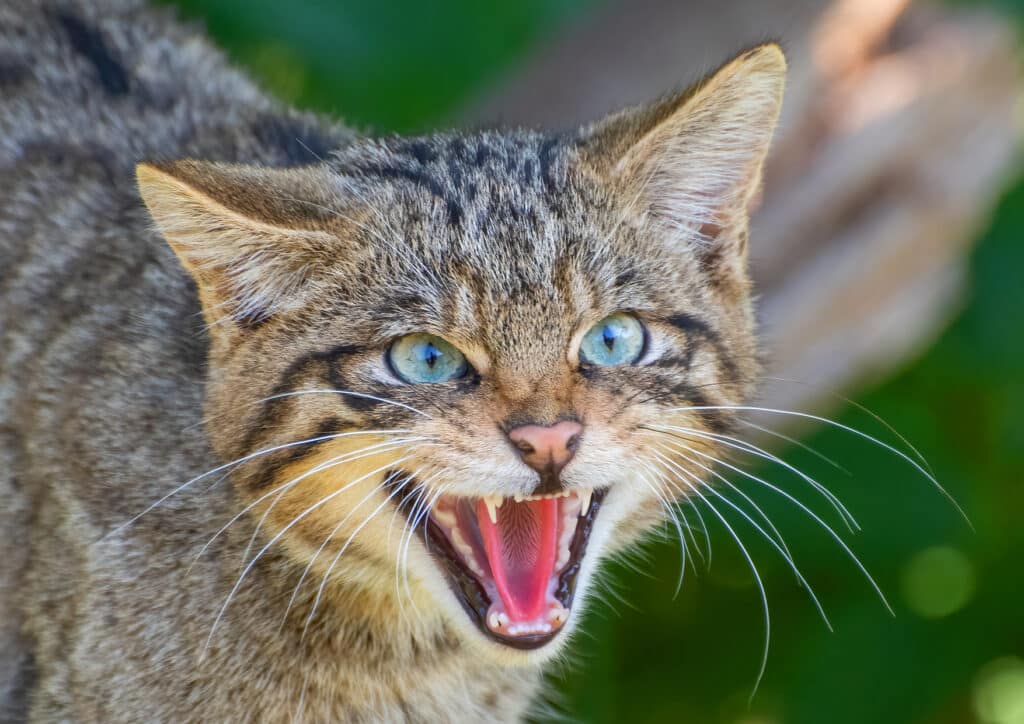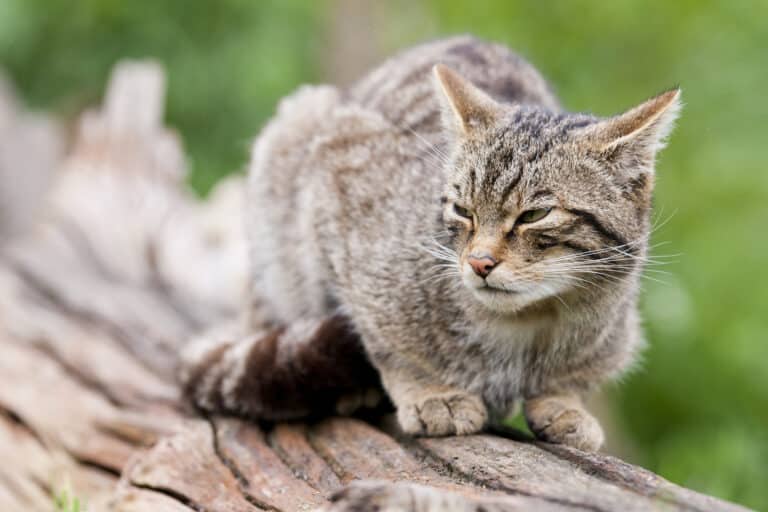Facts about the Scottish Wildcat
Scientific name: Felis silvestris
At a glance
- A subspecies of the European Wildcat which crossed into Britain after the end of the last Ice Age.
- Impacted by habitat fragmentation and widespread hybridisation with feral house cats.
- Experts have concluded it’s too late to conserve the wildcat as “a stand-alone population”.

Similar to a domestic tabby cat but larger and more robust, with a thicker, bushy tail with distinctive stripes and blunt black tip, European wildcats crossed from the Continent into Britain after the end of the last Ice Age, around 9,000 years ago.
They remain our only wild cat species, and though once widespread, the species is now on the brink of extinction and is confined to a handful of sites with pasture, scrub and forests in the Scottish Highlands, where they typically feed on rabbits and ground-nesting birds.
The earliest fossil remains of the Wildcat were found in what is now Berkshire. After the Ice Age (so before we began landscape-scale forest clearances), the Wildcat was commonly found across mainland Britain and on some of the Inner Hebrides including the Isle of Skye. So why is it so rare now? The decline of the ‘Highland Tiger’ is shocking,.but follows a familiar pattern that also saw the near-total eradication of predators like Polecats and Pine Martens: widespread habitat loss across its whole range as huge areas of land were cleared (which meant both loss of prey items and suitable den sites), and intense persecution: the Wildcat has been hunted for sport and persecuted as “vermin” since Medieval times, and as shooting estates developed from the 19th century it was deliberately targeted by gamekeepers to increase the numbers of birds for the gun.
By 1800 the Wildcat was already restricted to northern England, Wales (where it was scarce) and Scotland. By 1850 it had almost disappeared from west central Wales and was clinging on in Northumberland. By 1880 the Wildcat survived only in Scotland, and by 1915 its range had further contracted and it was restricted to remote pockets of suitable habitat in the north-west of the Scottish Highlands.
Since 1988 Wildcats have been protected by law, and in 1994 it became a European protected species under the Conservation (Natural Habitats, &c.) Regulations (as amended). This makes it an offence to deliberately or recklessly capture, injure, kill or harass a wildcat or disturb a wildcat in a den or any other structure or place it uses for shelter or protection.
Protection has come far too late though. The current population is thought to be no more than 300 individuals, and the Scottish wildcat is at serious risk of extinction. Despite surviving centuries of persecution and habitat loss, the Wildcat met the one threat it seems unable to deal with: hybridisation with domestic and feral cats.

Wildcats and domestic cats are closely related and readily interbreed, especially where Wildcats can’t find partners of their own species and come across farmyard or feral cats. They produce viable offspring and generation by generation the genetic purity of the Wildcat is being lost.
In spring 2018, the Scottish Wildcat Conservation Action Plan Steering Group commissioned members of the IUCN SSC Cat Specialist Group to carry out an independent review of the conservation status of the wildcat in Scotland. They reported in 2019 that based on the available information, they considered the wildcat population in Scotland “to be no longer viable. The number of wildcats is too small, the hybridisation too far advanced and the population too fragmented. We therefore conclude that it is too late to conserve the wildcat in Scotland as a stand-alone population.” They recommended that efforts should be made to save as much of the gene pool of the Scottish wildcat population as possible, reintroduction/reinforcement projects should be trialled, and that any remaining “pure Scottish wildcats” should be combined with wildcats from continental Europe (Scottish cats are an isolated subpopulation of cats still found on the continent, so the same species).
They also listed responsible cat ownership, the control of feral cats and the removal of hybrids (especially in the remnant wildcat areas of Scotland), as the major challenges facing wildcat recovery across the UK. On top of that Wildcats are still being killed by gamekeepers (accidentally perhaps, but still being killed), by dogs, and in road accidents while also being impacted by natural fluctuations in prey numbers.
